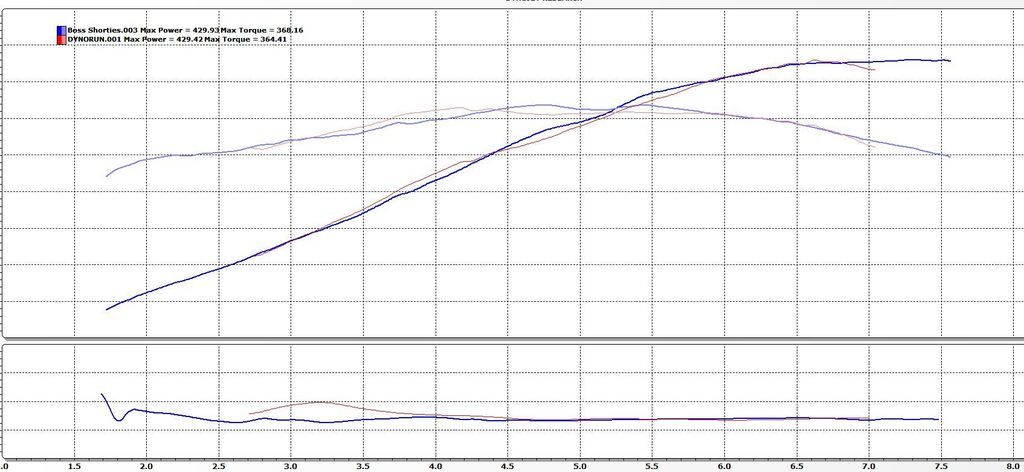...time to un-wad your panties.
1. I am not using the stock cam timing....it is wrong for you to assume such as you have been doing in your responses in this thread.
2. I have comparison data using multiple intakes on multiple cars. I tuned the first 2013-2014 Mustang GT to run 10's N/A with the stock long block using a Boss intake. I am working with another that is running 11.1x's@125+.
3. It is a known fact that the Boss intake WILL make less TQ and HP in the middle of the RPM range vs. the stock intake.
4. As I previously stated, there is not a 15HP peak swing by simply bolting a Boss intake on and making cam timing changes. The secret sauce with both the Boss and CJ are where they make power.
5. I have used all 3 intakes on my car running sub 7 second 1/8th mile ET's on both e85 and 93.
Here is a dyno sheet on my 2011 comparing the stock to Boss intakes. Notice the stock intake numbers in the middle drop. That was due to TQ mgmt and exactly why I made the previous comments in this thread.

Your words:
I said provide the data. I have mine, let's see your's.






 Reply With Quote
Reply With Quote